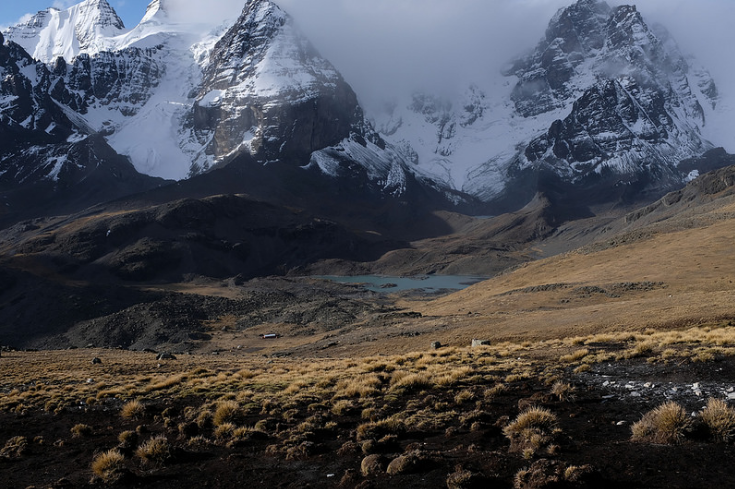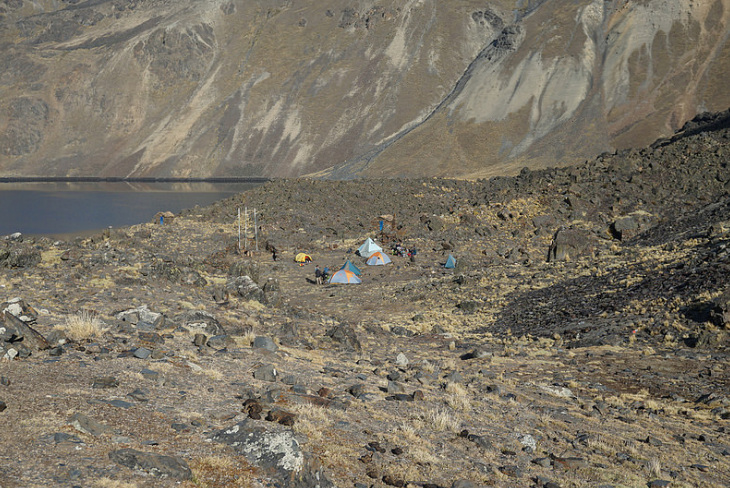When I first heard about this course I was sitting in a dark internet cafe in Bolivia full of grime and people shouting things I couldn’t understand. I was just beginning to realize that my life back home was waiting for me to make some decisions on what classes to take and even if I was going to go back to school in the first place, so I paid a few coins and logged onto Facebook, (little did i know I left my account logged in and returned to some vulgar and hilarious statuses in spanish on my account.) Katie had messaged me and sent me this poster to the course the day before the final deadline. When I read through the poster, squinting by the blinding light of the screen, I was in awe that this class actually existed. I immediately got my teacher recommendation in and signed up for the course… well I thought, I guess I am going back to school after this. Experiencing the depths of the landscapes in Bolivia and Peru without my phone or computer or even a camera, I thought it would be interesting to come back here and analyze the Blue Ridge mountains through a lense and try to gather up the skills to be a functional technology literate human in this society. I came into this course being an alien to technology and building websites and though I think I have a lot more to work on and understand I am so happy with how our website turned out and that I am opened up to these technology mediums for expression.
I honestly feel so connected our professors, Ken and Joe. Even though we met through a screen, throughout my college experience thus far you two are the only professors that have evoked my truth and essence. I miss those first classes where all we did was talk about literature and ideas on nature and our relationship to it, if I could get paid to do that that’s all i would do with my life. I do regret that once we started building our website and lost the structure of the class, I may have lost some of my initial passion and creative writing. I wish that I had spent more time alone in the hills of Craggy just writing with no expectations. The fact that what I was writing needed to be submitted and graded on our website choked the flow of my writing for some of the course and didn’t allow everything I felt I could experience and write about to arise.
I also want to continue this project because though Craggy is a beautiful breathtaking landscape, I don’t think it’s real and applies to the rest of the world. Hardly anyone these days gets to visit such a unique landscape away from human civilization. I wanted to develop a new nature writing voice that applies to where we are living right now. A voice that isn’t as romantic and distant, isn’t as nostalgic and full of desire. I think I began to do this, and I had no idea a voice like this could exist before taking this course so I’m definitely on my way to redefining my used up nature voice. We just couldn’t resist being able to have an excuse to go to Craggy all the time. So if I did this course again, I would pick an abandoned house in the middle of a city or a rooftop.
So what I’m most proud of as a result of this course, is the new platform I have to express my voice… It has gotten old reading good ol’ Thoreau and Emerson when a new truth is seeping out in this century. I just want to do whatever will allow me to be with the trees, I wish there was a major in being a Lorax. I have a intimate writers mind that wants to transform all pain into art that people can be touched by, and understand the world better through experience and connection. I’ve been told that doesn’t get you by in this world. So what I’m taking from this course is a new way to express my truth, and to create a way for me to be a “nature writing scientist”.
As Whitman says:
“When I heard the learn’d astronomer,
When the proofs, the figures, were ranged in columns before me,
When I was shown the charts and diagrams, to add, divide, and measure them,
When I sitting heard the astronomer where he lectured with much applause in the lecture-room,
How soon unaccountable I became tired and sick,
Till rising and gliding out I wander’d off by myself,
In the mystical moist night-air, and from time to time,
Look’d up in perfect silence at the stars.

 .
.